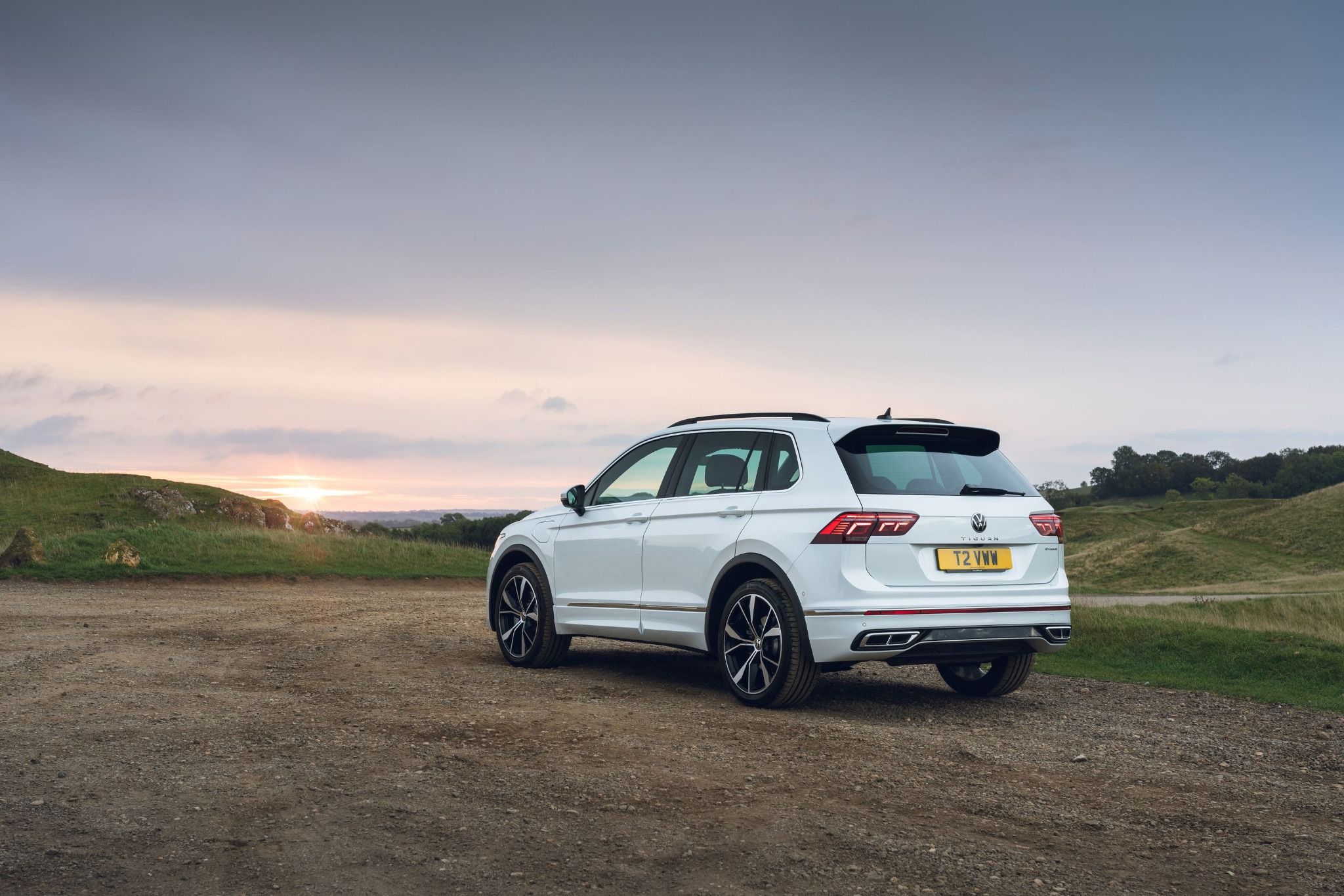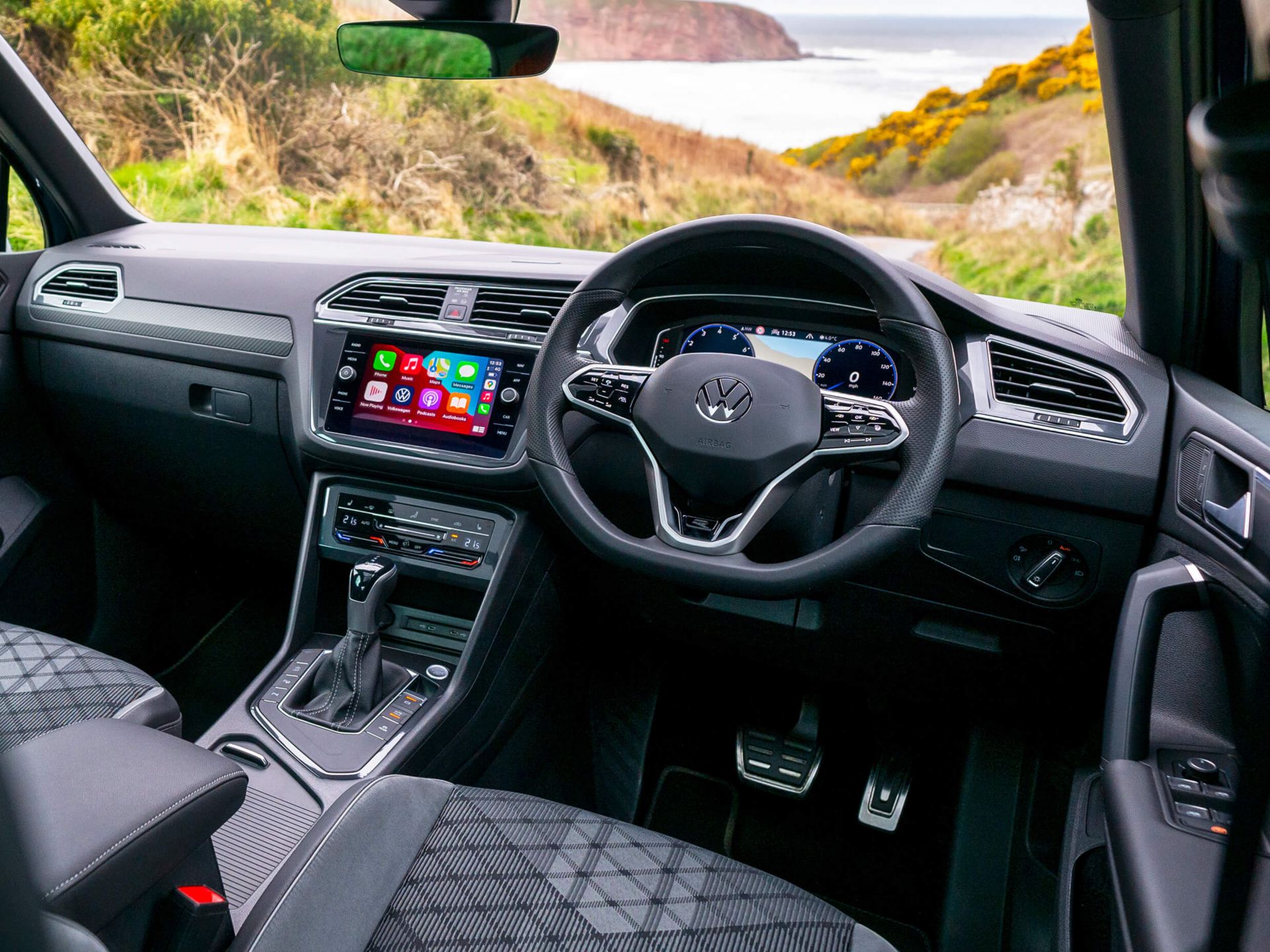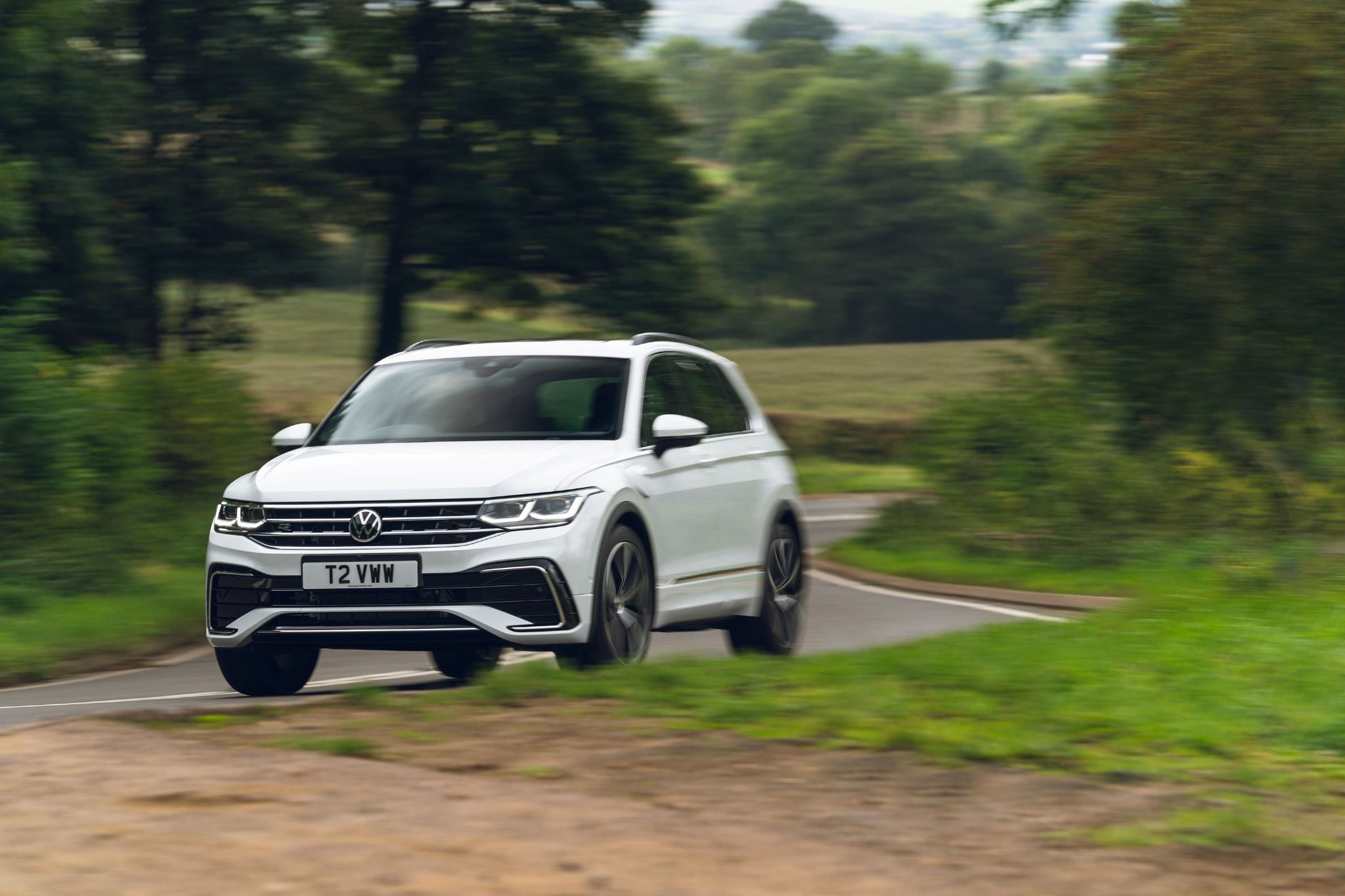The Volkswagen Tiguan has been given the hybrid treatment. Is it a good combination?
- What is the Volkswagen Tiguan eHybrid?
- What’s new for the Volkswagen Tiguan eHybrid?
- Performance of the Volkswagen Tiguan eHybrid
- What is the Volkswagen Tiguan eHybrid like to drive?
- Exterior of the Volkswagen Tiguan eHybrid
- Inside the Volkswagen Tiguan eHybrid
- What’s the spec like for the Volkswagen Tiguan eHybrid?
- Verdict on the Volkswagen Tiguan eHybrid
What is it?
Volkswagen is working through its range, adding electrification to various models and in particular plug-in hybrid powertrains. These lower emissions and improve economy, helping drivers lower their fuel usage. And with a good chunk of electric-only range, it means many shorter trips in these models can be completed without using the petrol engine. It’s no surprise to see one of these powertrains making its way into the Tiguan, then. The mid-sized SUV has been a huge hit with UK buyers as a family car, meaning they’re regularly used for a fairly short school run or commute – ideal plug-in hybrid conditions, then.

What’s new?
The biggest change is, unsurprisingly, centred around that powertrain. However, that sits within the latest generation of Tiguan, which has a sharper exterior styling and a more high-tech cabin. Other changes from the regular models include a minor practicality hit, as is so often the case with these plug-in models. Because the batteries have been placed beneath the boot, luggage capacity is 456 litres, which is 139 litres down on non-hybrid models. On the plus side, though, it’s still pretty easy to access and the rear seats can be folded down to massively improve storage space.
What’s under the bonnet?
So, let’s take a look at that hybrid powertrain. It uses VW’s tried and tested combination of a 1.4-litre turbocharged petrol engine linked to an 85kW electric motor and a 13kWh battery. The duo make 242bhp combined while 0-60mph is possible in 7.3 seconds. However, fuel efficiency is key here, and official figures suggest 153.2mpg is possible with CO2 emissions of 43g/km. With the battery fully topped up you should be able to see almost 30 miles of electric-only range, which makes it ideal for shorter trips, where you could get away with using no petrol at all. Although it’s recommended to use a slightly faster wallbox, it still only takes about five hours to charge at a three-pin plug.

What’s it like to drive?
The regular Tiguan is a comfortable, quiet SUV, so its move to hybrid power has only worked to improve on its already solid abilities. It’s impressively refined at speed but most impressive of all is the fact that you’ll barely notice the switch between petrol and electric power. You have decent control over your charge, too, so you can hold battery for later if you’re heading into the city then put it in EV only mode when needed. It means that you can maximise efficiency while also helping to improve air quality in built up areas.
How does it look?
The Tiguan has always been a handsome SUV, but the latest generation has evolved the styling in a way that stays true to what came before but brings a slightly sharper edge. These subtle tweaks improve the car’s appeal and its presence on the road, looking a lot larger than it actually is. Highlights of the exterior design include sleeker, more angular headlights that blend into a chrome grille, while at the back you’ll find a large chrome model name badge.

What’s it like inside?
The Tiguan’s cabin is a lovely place to be, with lots of high-quality materials and clear screens on display. The switchgear also gets some hybrid-centric buttons that control the drive modes and battery usage, while battery-related menus can be found in the infotainment system, too. On top of this technology the Tiguan also gets the basics right. The seating position is high and comfortable with plenty of adjustment, while those sitting in the back should have plenty of room too. And while the boot is smaller than in non-hybrid models, it’s still a useful space with a wide-opening that makes it ideal for larger items.
What’s the spec like?
Our test car came in the comfort-focused Elegance specification, with another alternative being the sporty-focused R-Line. It’s priced from £37,780 so commands a bit of a premium but gets more standard equipment such as VW’s Discover Media Navigation system within an eight-inch touchscreen. It also has Apple CarPlay and Android Auto integration. There are various upgrade options available, such as an around-view parking camera (£745), heated outer rear seats (£240) and inductive smartphone charging (£430).
Verdict
A plug-in hybrid powertrain is a great fit for the Tiguan because it works so well with the model’s original attributes so well. With a decent amount of electric range it means running costs will be low (if you keep the battery topped up) while also being refined and comfortable about town. With the Tiguan already being one of the firm’s most popular models, this hybrid powertrain should prove a big hit.
